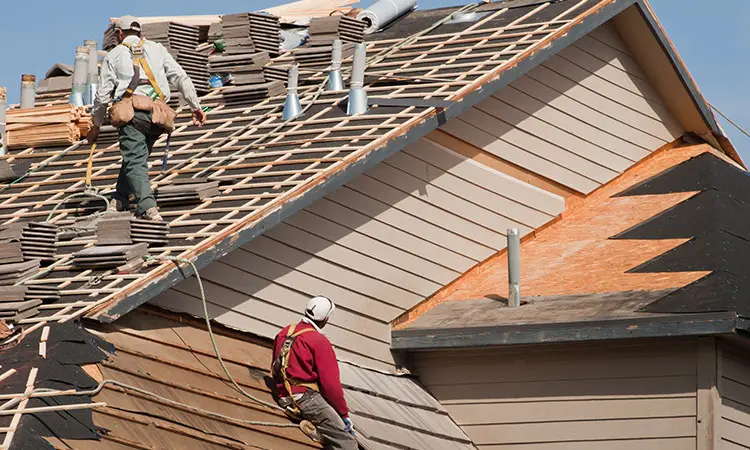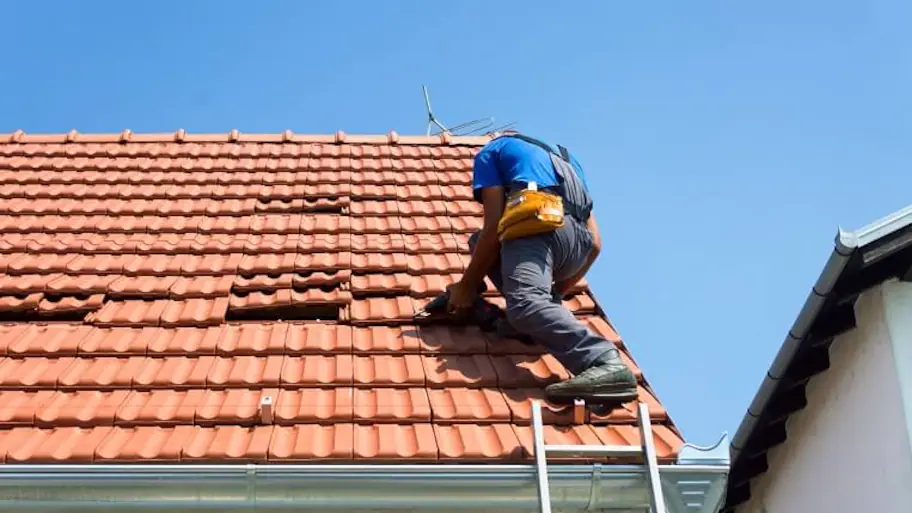Roofing Companies Oahu: Trusted Professionals for Your Roofing Demands
Roofing Companies Oahu: Trusted Professionals for Your Roofing Demands
Blog Article
Understanding the Different Types of Roofing Systems: A Comprehensive Guide for Homeowners
With a variety of options-- varying from the conventional gable to the contemporary flat-- each kind provides unique benefits and difficulties that need to align with the homeowner's environmental factors to consider and particular demands. As we check out the intricacies of different roofing system kinds, it becomes noticeable that one size does not fit all; the ideal choice may stun you.
Saddleback Roof
Gable roofs, defined by their triangular shape, are among one of the most popular roof designs as a result of their simplicity and efficiency in shedding water and snow. This style includes two sloping sides that fulfill at a ridge, permitting reliable drainage and lessening the risk of water build-up. The steep pitch generally connected with gable roofing systems boosts their ability to deal with hefty rainfall, making them appropriate for numerous climates.
Along with their useful advantages, saddleback roofs provide visual convenience. They can be adapted to different architectural designs, from traditional to modern homes. The style can likewise suit added features such as dormer windows, which enhance all-natural light and ventilation in the attic room.
Additionally, gable roofs offer ample area for insulation, adding to energy effectiveness. Home owners can select from a selection of roof covering products, consisting of asphalt tiles, steel, and floor tiles, further boosting customization options.
Despite their advantages, gable roofs might call for added support in areas prone to high winds or hefty snowfall. On the whole, the gable roof continues to be a popular selection because of its mix of performance, sturdiness, and aesthetic charm.
Apartment Roofs
Level roofs are often identified for their minimal design and practical applications, especially in commercial and commercial settings (oahu roofing). These roofings feature a horizontal or virtually horizontal surface area, which permits very easy construction and functional space utilization. While they might lack the visual charm of pitched roofing systems, level roofings provide countless advantages, especially in metropolitan environments where maximizing space is crucial
Among the key benefits of level roofing systems is their access. Property owners can make use of the roofing system space for numerous functions, such as roof gardens, balconies, or solar panel installments. Furthermore, level roofing systems are normally more economical to maintain and mount compared to their sloped equivalents, as they require fewer products and labor.
Typical products utilized for flat roofing systems include built-up roofing (BUR), customized bitumen, and single-ply membranes, each offering unique benefits. In general, flat roofings serve as a versatile and useful option for numerous property owners and organizations alike.
Hip Roofings
Hip roofings are defined by their sloped sides that converge at the top, forming a ridge. This layout is distinctive from gable roofing systems, as all 4 sides of a hip roof covering incline downwards towards the walls, offering a more secure framework. The angle of the inclines can vary, permitting adaptability in building aesthetic appeals and capability.
Among the key advantages of hip roofings is their ability to stand up to hefty winds and negative climate problems. The sloped surface areas make it possible for far better water drain, decreasing the threat of leaks and water damage. Additionally, hip roofing systems offer enhanced attic space, which can be made use of for storage space or perhaps transformed into comfortable areas.
Nonetheless, constructing a hip roof can be extra complicated and expensive than easier roof types, such as saddleback roofs. The extra material and labor included in developing the inclines and ensuring proper structural integrity can cause higher expenses. In spite of these drawbacks, lots of property owners prefer hip roofing systems for their resilience, visual appeal, and capacity for power efficiency.
Mansard Roofings
Mansard roofings, typically identified by their unique four-sided style, attribute 2 inclines on each side, with the reduced incline being steeper than the top. This architectural style, stemming from France in the 17th century, is not just cosmetically appealing however practical, as it optimizes the usable room click here to read in the upper floorings of a structure. The high lower slope enables more headroom, making it an excellent option for lofts or attic rooms, which can be transformed into living rooms.
Mansard roofings are defined by their versatility, accommodating various architectural styles, from standard to contemporary. They can be built with various products, consisting of asphalt shingles, slate, or steel, giving home owners with a variety of choices to suit their choices and spending plans. Additionally, the style permits the integration of dormer windows, enhancing natural light and air flow in the upper levels.
However, it is necessary to consider the potential drawbacks. Mansard roofings may call for even more upkeep due to the complexity of their style, and their high inclines can be challenging for snow and rain runoff. In general, mansard roofing systems integrate elegance with usefulness, making them a preferred choice amongst property owners looking for distinct architectural features.
Shed Roofs
As homeowners significantly look for simplicity and performance in their building styles, shed roofings have actually emerged as a popular selection. Defined by a single sloping plane, a shed roof provides a minimal visual that matches various home styles, from contemporary to rustic.
One of the primary benefits of see here a shed roofing system is its simple construction, which often converts to lower labor and material expenses. This design enables reliable water drainage, lowering the look at this website danger of leaks and water damage. Furthermore, the upright incline supplies enough area for skylights, enhancing all-natural light within the inside.
Shed roofings likewise supply convenience in terms of use. They can be properly incorporated right into enhancements, garages, or exterior structures like structures and sheds. Additionally, this roof covering style can suit different roof materials, consisting of steel, asphalt roof shingles, or perhaps green roofings, straightening with environment-friendly efforts.
Nonetheless, it is crucial to take into consideration local climate problems, as hefty snow lots may demand changes to the roofing's angle or structure. In general, lost roofings provide a useful and cosmetically pleasing alternative for house owners wanting to make best use of functionality without endangering design.
Final Thought


Gable roofings, characterized by their triangular shape, are among the most popular roof designs due to their simpleness and effectiveness in dropping water and snow. oahu roofing. The steep pitch generally connected with gable roof coverings improves their capacity to take care of hefty precipitation, making them ideal for numerous climates
While they may lack the aesthetic appeal of pitched roofings, level roofing systems use many advantages, particularly in city atmospheres where making the most of space is critical.

Report this page